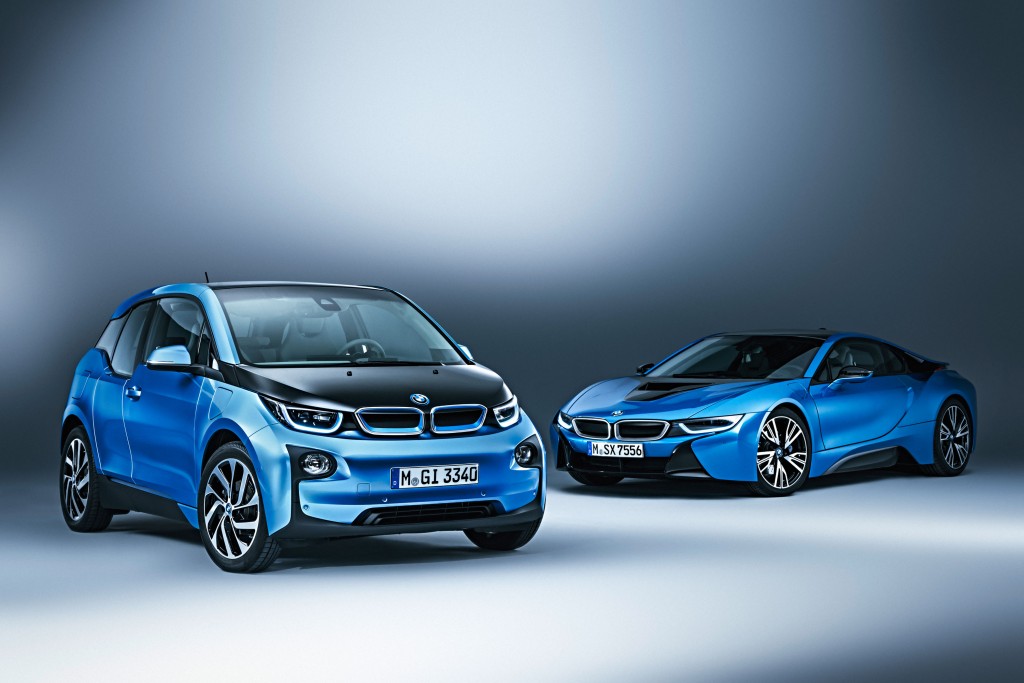
2016 Chevrolet Volt
Transitions into new technologies always generate confusion and misinformation, and certainly that has been the case with modern electric cars.
Buyers, automakers, and analysts debate their cost, suitability, real-world range, wells-to-wheels carbon footprint, and recyclability, among other issues.
Six years after the first modern electric cars launched, the volume of misinformation has slowed somewhat as sober analysis replaces rhetoric.
But consensus in many of those debates has not necessarily been achieved, and new analyses and articles still emerge that can paint a distorted picture of complex issues.
Take, for example, a study published by long-established consulting firm Arthur D. Little.
Titled Battery Electric Vehicles vs. Internal Combustion Engine Vehicles, it was published in November—and quickly promoted by skeptics of electric cars.

2017 Nissan Leaf
Lower emissions, higher cost
The study concluded that, over its lifecycle, an electric car would generate 23 percent fewer greenhouse-gas emissions than a gasoline-powered car.
That sounds good, no? Apparently not.
If every car on earth were electric, the study continued, that reduction would translate to just a 1.8-percent decline in total emissions.
But the study also concluded that even small electric cars would cost $20,000 more for owners to operate than comparable gasoline-powered cars.
And, their total "human toxicity" (largely due to heavy metals and graphite) would be three to five times greater.
Cue the ominous background music.

2017 BMW i3
Assumptions and methodology
The challenge with all such studies, of course, is in looking at their assumptions and methodology.
An electric car with a higher purchase price would definitely be much more expensive for an owner who kept it only a couple of years and put very few miles on it, for example.
Last month, the Union of Concerned Scientists critiqued the ADL study, summarizing its findings in a post entitled "'Little' Errors Add Up: What an Electric Vehicles Study Gets Right, and What It Gets Wrong."
(That's a pun. Get it?)
The UCS notes that its own studies and the ADL report both agree that plug-in electric cars cost less to fuel than gasoline or diesel cars.
And both also agree that they have lower overall emissions of greenhouse gases, and that those reductions will increase over time as the grid gets cleaner—although the two differ in the amount of the savings.
![Tesla Model S lithium-ion battery pack in rolling chassis [photo: Martin Gillet via Flickr] Tesla Model S lithium-ion battery pack in rolling chassis [photo: Martin Gillet via Flickr]](https://images.hgmsites.net/lrg/tesla-model-s-lithium-ion-battery-pack-in-rolling-chassis-photo-martin-gillet-via-flickr_100481091_l.jpg)
Tesla Model S lithium-ion battery pack in rolling chassis [photo: Martin Gillet via Flickr]
Every battery replaced
The group goes on to note, however, that the Arthur D. Little study makes two critical assumptions that together account for fully 40 percent of the emissions attributed to the electric car.
First, it assumes that every electric car will need a replacement battery pack after 7 to 10 years—apparently based on the length of time those batteries are warranted against failure by carmakers.
This assertion is highly debatable. With the very first modern plug-in cars just six years old, the data simply isn't there yet.
Differences in retained battery capacity for modern lithium-ion packs may exist between different models, and between battery-electric and plug-in hybrid vehicles.
"Assuming a battery replacement at 7-10 years is a 100-percent failure rate for the battery system," notes the UCS.
"Making this assumption would require some proof, and yet there’s no evidence that this is the case for battery lifetime."

Gas pump
Adding gasoline miles
Second, the ADL study assumes that all electric-car users will "require a replacement gasoline car for about a quarter of all miles driven, because electric vehicles are driven fewer miles per year than gasoline cars."
This increases total emissions attributed to a Nissan Leaf from 69 tons to 97 tons, the UCS notes—a very large boost based on a "questionable assumption."
The Arthur D. Little study does not, in other words, compare emissions for an electric car to those for a gasoline car driven the same distance. It adds miles driven on gasoline to the electric car's emissions.
The study makes this assumption based on early data from Idaho National Laboratory that showed Nissan Leaf drivers covering an average of 9,700 miles per year, while gasoline cars averaged about 12,000 miles.

2016 Chevrolet Volt
But, the UCS notes, average electric-car miles per year have increased since the INL data was collected. More recent data from the California Air Resources Board, for instance, shows that Nissan Leaf drivers now cover 11,000 miles a year.
Importance of leasing
Even more important, UCS points out, most electric-car leases cap annual miles at either 10,000 or 12,000 miles, creating a powerful economic incentive not to exceed that limit.
Nissan Leaf drivers with 15,000-mile leases drove more than 12,000 miles a year on average, while those with 12,000-mile leases averaged fewer than 9,000 miles a year.
Today, the majority of electric cars in the U.S. that were not made by Tesla are leased.
The majority of gasoline vehicles, on the other hand, are purchased outright, which significantly reduces the financial penalty of driving more than the average of 12,000 miles per year.
1970s Los Angeles smog depicted in the Honda short film 
Gasoline refining ignored
Dave Reichmuth, senior clean-vehicles engineer for the UCS, added a final point in follow-up discussions with Green Car Reports:
The ADL study also briefly discussed the paper on air quality from the National Bureau of Economic Research that we (and others) examined back in July 2015.
One issue with the NBER analysis is that it ignores any air pollution from gasoline that doesn’t come from the tailpipe. Almost all the sulfur oxides and combustion particulate matter come from the refining and distribution of gasoline, so it’s a skewed analysis.
For a much more rigorous look at electric cars and air pollution, I recommend a 2014 paper published in the Proceedings of the National Academy of Sciences.
Finally, the ADL report also tried to look at human toxicity and other environmental metrics. I didn’t analyze their finding on this in detail because they didn’t give enough data on their methods to do so.
The gasoline-car substitution and battery replacement make up a significant portion of the pollution attributed to the electric car, so some of the criticism on the GHG analysis would apply here too.
Robust debate required
It's precisely these kinds of critiques—using continually emerging data on how electric cars are actually driven and charged by real-world owners—that electric-car advocates need to have at hand.
Skepticism about new technologies in a fast-moving world is not only natural but appropriate. Pretty much everyone is aware of new products or technologies that have turned out to have crucial and deleterious side effects.
Today, more is presently known about the costs of operating an electric car and its wells-to-wheels emissions than about the durability of battery packs and how and when mass-market buyers will come to view plug-in vehicles as substitutes for gasoline cars.

2016 Chevrolet Volt
Analyses are also challenged by the fact that both the costs and emissions of electric cars vary significantly, depending on the price of electricity and the grid mix in the areas electric cars are used.
That variation is far greater than the range of gasoline prices, for instance, so confusion over these issues arises naturally.
We already see much less about the so-called "coal tailpipe" as analysis after analysis has shown that even in areas where coal is the predominant generation source, an electric car has lower wells-to-wheels carbon emissions than vehicles that average less than about 35 miles per gallon.
Which is to say, the vast majority of vehicles on the market today.
Follow the hype
A final note is that it can be instructive to look at the entities and organizations that promote any particular study or point of view.
Immediately after the release of the ADL study, a group called the "U.S. Consumer Coalition" issued a press release headlined, "New Study Reminds Consumers That Electric Vehicles Are Not A 'Silver Bullet'."
The group defines itself as "a consumer advocacy organization that promotes expanded consumer choice, responsible regulation of consumer-facing industries, fair market conditions, and consumer freedom."
Those tend to be code words for deregulation.

U.S. Capitol Building
According to the release, its "Fair Energy Initiative" is intended to support "expanded consumer choice for energy products."
"Excessive regulation, restrictions on the development of new sources of energy, and political activism adversely affect American consumers by driving up energy prices," it continues, "stifling innovation, and restricting research and development in the energy industry that can lead to a healthier environment."
The USCC itself is small and little-known among major lobbying firms in Washington, D.C.
An insider in that business, however, notes that the group's lobbyist in the past has been Sarah Makin, now Director of Coalitions for Vice-President-Elect Mike Pence.
Make of that what you will.
_______________________________________













